Big Red Book
Celebrating television's This Is Your Life
This Is Your Life: Timeline

This Is Your Life was a staple of television schedules for almost fifty years, and at the peak of the programme's popularity, it consistently topped the ratings with audiences of up to, and sometimes more than, 20 million viewers.
With its famous theme tune and Big Red Book, the programme became a television institution, capturing viewers' imagination while honouring over a thousand subjects, all with a unique story to tell.
So, from the first edition to the last, we celebrate all the milestones and highlights...
related pages...
a brief biography
a career review
the programme's icon
the producers who steered the programme's success
the iconic titles and theme tunes
the studio look and locations
the genesis of the programme
the man who created it all
the programme's relaunch
a review of the first series
Stories behind This Is Your Life
a review of the second series
A special edition celebrating ITV's 21st anniversary
The Story of This Is Your Life
a BBC Did You See...? special
a celebration of a thousand editions
the special editions
Keeping it in the family
 |
29 July 1955 In the very first edition of This Is Your Life on British television, the show's future presenter, Eamonn Andrews, became the first subject, surprised by the creator and host of the original American version, Ralph Edwards. Eamonn had been led to believe the subject was to be boxer Freddie Mills after the original choice of footballer Stanley Matthews had been cancelled due to a press leak. |
|
 |
25 September 1955 The first regular edition of This Is Your Life honoured Yvonne Bailey, a former Second World War Special Operations Executive agent. Presenter Eamonn Andrews opened the programme by referring to his own tribute as "one of the most thrilling experiences of my life", and after surprising Yvonne, he asked her if she had "the slightest idea of what was in store... when you came to the theatre..?" |
|
 |
12 February 1956 Footballer Stanley Matthews had been the original choice of subject for the first edition of This Is Your Life, but a press leak caused the programme to be cancelled. Stanley was eventually surprised for the first pre-recorded edition of the programme, which had been broadcast live up to that point. |
|
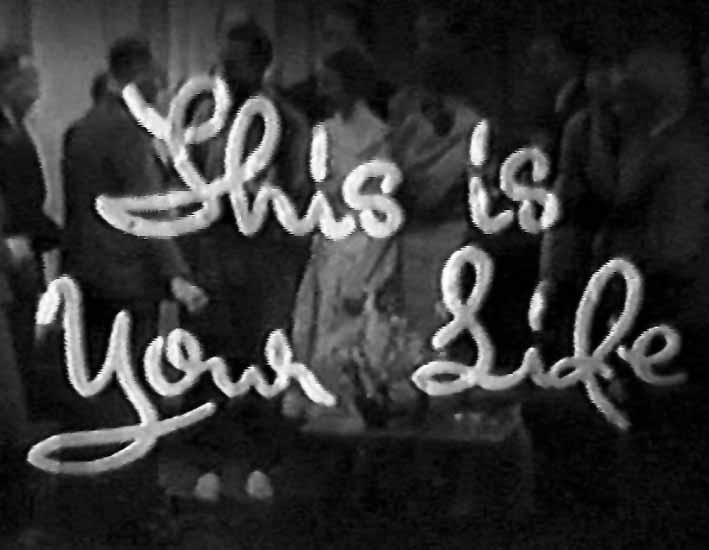 |
20 May 1956 In a review of the programme's first series, several subjects returned to the BBC Television Theatre for what Radio Times described as 'highlights and sidelights on the personalities and behind-the-scenes stories'. This special edition - These Were Your Lives - attempted to address negative press coverage and dispel untruths about the programme's practices. |
|
 |
10 December 1956 In the first This Is Your Life edition to feature a set designed and dressed appropriately to that week's subject, the writer Compton Mackenzie was treated to the setting of a well-stocked library. Later designs include an old BBC radio studio for broadcaster Stuart Hibberd, a Cornish village for lifeboat coxswain Archie Rowe and a circus ring for Coco the Clown. |
|
 |
24 December 1956 For the first Christmas-themed edition, presenter Eamonn Andrews announced that the This Is Your Life book 'bears the symbols of the season' as cleaner and mother Maud Fairman was honoured in a Christmas Eve broadcast. Each guest arrived with a gift for the subject - who later declared, "I became Diana Dors overnight". |
|
 |
21 January 1957 The conductor of the Manchester-based Halle Orchestra, Sir John Barbirolli, was the subject of the programme's first edition to be broadcast outside of London when the production team relocated to the BBC's Dickenson Road Studios in Manchester. |
|
 |
24 June 1957 A review of the second series of This Is Your Life - Stories behind This Is Your Life - was a further attempt to dispel more negative press criticism, as Eamonn Andrews declared, "We do not shock, we do not pry. We try to make the show a joy". Recent subjects returned to the King's Theatre, Hammersmith, to recall their memories. |
|
 |
28 October 1957 In a unique and unusual departure, This Is Your Life paid tribute to its only deceased subject, Scottish engineer and inventor of the world's first mechanical television, John Logie Baird, ahead of the 21st anniversary of the world's first regular television service. |
|
 |
16 December 1957 For the first edition of This Is Your Life to be broadcast from Wales, the Welsh heavyweight boxer Jack Petersen was surprised at the Memorial Hall in Barry, a town in the Vale of Glamorgan. |
|
 |
27 January 1958 In a double first for This Is Your Life, Eamonn Andrews surprised the actress and dancer Louie Ramsay during a performance of the pantomime Babes in the Wood at the King's Theatre in Edinburgh, for the first edition to be broadcast from Scotland, and the first to interrupt a live performance. |
|
 |
24 February 1958 The This Is Your Life book, from which Eamonn Andrews read his script, was decorated in the first known example of its kind to honour the retired schoolmaster 'Dapper' Channon, who had taught at Queen's College in Taunton for over 40 years. The book's cover was decorated in the college colours - white, black and old gold. |
|
 |
17 March 1958 Following on from 'Dapper' Channon's decorated script, the edition honouring the actor Noel Purcell, broadcast as a St Patrick's Day special - complete with a Ceilidh band and Irish dancers - used a This Is Your Life book with a cover appropriately titled in Gaelic font. |
|
 |
10 July 1958 Such was the public reaction to the programme honouring the popular actor A E Matthews that 'by viewer's special request' it became the first This Is Your Life to be repeated. First broadcast live on 5 May 1958, this edition, which ended the show's third series, caught the imagination of one particular reviewer who wrote: 'This was THE life of the whole series.' |
|
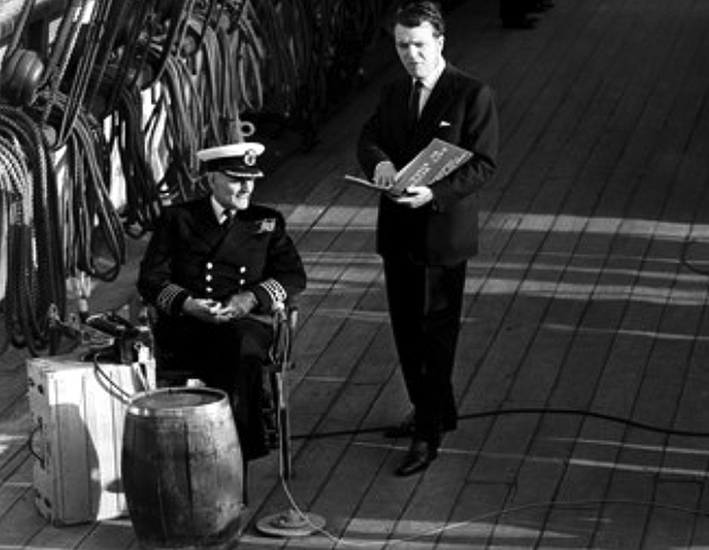 |
20 April 1959 Sir Roy Gill - the retired Royal Navy Reserve officer and current master of the Cutty Sark - was surprised onboard the historic sailing ship from its docked home in Greenwich, London, for the programme's most ambitious recording location to date and the first to be a genuine 'outside' broadcast! |
|
 |
11 May 1959 Comedian Tommy Trinder had been surprised live on television several weeks previously, so for the first and only time in the history of This Is Your Life, the subject's identity was revealed ahead of the show's broadcast – in this case, in the Radio Times listing. This edition was billed as the 100th programme, but... |
|
 |
7 September 1959 ...As Radio Times had included the two end-of-series review programmes - These Were Your Lives and Stories behind This Is Your Life - in their count, the 100th subject of This Is Your Life, on the 100th programme, was actually the Church of Scotland minister The Reverend Dr Donald Caskie. |
|
 |
21 September 1959 Billy Butlin, the South African-born British entrepreneur whose name is synonymous with the British holiday camp, became the first This Is Your Life subject to be surprised on their wedding day when Eamonn Andrews caught up with him at the executive offices of the Associated British Picture Corporation in London's Piccadilly. |
|
 |
30 November 1959 The This Is Your Life edition honouring Regimental Sergeant Major John Lord, broadcast from the Royal Military Academy at Sandhurst, included the first reigning monarch ever to appear on live television when His Majesty King Hussein of Jordan joined the guest list. |
|
 |
1 February 1960 The award-winning humanitarian and member of the Church Army, Thomas Salmon, became the first subject of colour to be honoured by This Is Your Life when he was surprised during the Daily Mirror Honours Awards dinner at the Mayfair Hotel in London. |
|
 |
6 February 1961 Headline news was made when the Irish and Tottenham Hotspur footballer Danny Blanchflower became the first person to refuse to participate in This Is Your Life. An edition featuring the Somerset GP Dr Robert Fawcus - recorded several weeks earlier - hastily replaced the planned programme. |
|
 |
6 March 1961 Popular concert pianists Maryan Rawicz and Walter Landauer became the programme's first 'double subjects' when Eamonn Andrews opened the programme by announcing: 'making ready for this moment has been... well, twice as difficult as usual'. |
|
 |
9 October 1961 The production team travelled outside of the UK for the first time - to the Italian city of Naples - to surprise the Roman Catholic priest Mario Borrelli before returning to London's BBC Television Theatre for a live broadcast. |
|
 |
23 October 1961 The programme featuring the actor-manager Brian Rix was the first edition of This Is Your Life not to be recorded immediately after the 'pick-up'. Brian was surprised at a friend's house party in Surrey on a Sunday evening - while the actual tribute was recorded at the BBC Television Theatre the following evening. |
|
 |
6 November 1961 Elizabeth Twistington Higgins, the former ballet dancer who became a celebrated artist after contracting polio, was the first subject of This Is Your Life to be surprised on their birthday - and the first to be told of the surprise in advance - following doctors' advice to the producers that a sudden shock for Elizabeth may harm her health. |
|
 |
25 December 1961 For the programme's first-ever Christmas Day broadcast - which honoured the 88-year-old retired nurse Isabella Woodford - each guest brought a present, and the tribute ended with all the guests sitting down to a traditional Christmas turkey dinner. |
|
 |
5 March 1962 Schoolboy David Butler - who lost both legs and his left hand in a mortar bomb explosion - became the programme's youngest ever subject - at the age of 17 - when he was surprised in his headmaster's study at Hemel Hempstead Grammar School. |
|
 |
30 April 1962 Former cricketer Joe Filliston became the programme's oldest ever subject - at the age of 100 - when Eamonn Andrews surprised him during a cricket club dinner and dance at Motspur Park in South West London. |
|
 |
4 December 1962 For the first time in the programme's history, This Is Your Life was recorded outside of the UK, when the production team travelled to Dublin to surprise housepainter Stephen Behan - father of writers Brendan, Brian and Dominic - at the television studios of Irish broadcaster, RTE. |
|
 |
5 March 1963 This edition, which honoured disabled foster mother Phyllis Lumley, opened with an announcement from Eamonn Andrews - "Tonight, This Is Your Life has relaxed its most rigid rule in order to tell one of its greatest stories. For the first time in eight years and 216 programmes, we told our Guest of Honour our plans just an hour ago". |
|
 |
28 November / 5 December 1963 Albert Guerisse - a former member of the Belgian resistance who organised escape routes for allied pilots during the Second World War - became the first subject to have their story told over two editions, which were broadcast on consecutive weeks. |
|
 |
2 April 1964 The cover of the This Is Your Life book was produced with braille lettering for the first time in honour of the mountain walker, writer and poet Sydney Scroggie, who lost his sight and part of his right leg on active service during the Second World War. |
|
 |
30 April 1964 Having decided that the programme had run its course - after nine years and 256 editions - the BBC broadcast its final edition of This Is Your Life - honouring Sister Mary Hawkins, a former nurse who worked in various international war zones. |
|
 |
1964-1969 After leaving the BBC in 1964, Eamonn Andrews signed a contract with rival broadcaster ABC Television, who offered him the opportunity to front their new sports programme, World of Sport, and his own live weekly chat show. A reallocation of the ITV franchises in 1968 created Thames Television and ignited the possibility of launching a new colour version of This Is Your Life... |
|
 |
12 November 1969 The first edition of This Is Your Life, produced by Thames Television, was recorded at the Bloomsbury Centre Hotel in London, as the company's newly built Euston Road Studios were not ready. The tribute, which honoured the television scriptwriter Harry Driver, was broadcast on 3rd December - the third programme in the new series. |
|
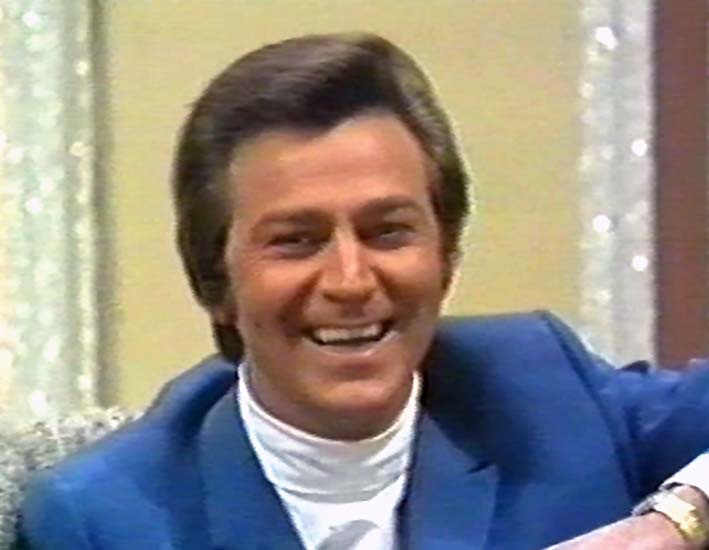 |
19 November 1969 The very first edition of This Is Your Life to be shown on ITV - when the programme returned to screens after a five-year break - was broadcast live from the London Palladium. Entertainer Des O'Connor was surprised by original host Eamonn Andrews for the programme's first colour edition. |
|
 |
31 December 1969 In a special New Year's Eve broadcast, the popular female vocal group The Beverley Sisters became the first 'trio' to be featured as joint subjects - and two of the three sisters, Babs and Teddie, became the first set of twins to be subjects of This Is Your Life. |
|
 |
23 February 1970 The London-born journalist and broadcaster Gale Pedrick died. Gale wrote the scripts for the first 35 editions of This Is Your Life, setting the style and tone for the early programmes. |
|
 |
15 April 1970 When Eamonn Andrews surprised him at the Caesar's Palace nightclub in Luton, singer Frankie Vaughan became the first subject to appear as the guest of honour on both the American and British versions of This Is Your Life. US host Ralph Edwards had previously surprised the singer for American television in October 1960. |
|
 |
18 November 1970 With its gold embossed lettering, the Big Red Book was first seen at the start of the eleventh series in a two-part tribute for entertainer Bob Hope. A technician's strike meant that, ironically, this edition was transmitted in black and white! |
|
 |
12 May 1971 Manchester United manager Sir Matt Busby became the first subject to be honoured for a second time when Eamonn Andrews announced: 'For the first time ever, I'm saying for the second time, this is your life'. |
|
 |
17 November 1971 The first two Thames Television-produced series of the relaunched This Is Your Life were steered by producer Robert Tyrell. However, series 12 of the programme launched with a new producer - Malcolm Morris, who headed the production team for the next three years. |
|
 |
22 March 1972 The production team travelled beyond Europe for the first time ever - 4,000 miles to the Bush country of Southern Kenya - to surprise the co-founder of the Flying Doctors Service – Dr Michael Wood. |
|
 |
15 November 1972 Pat Phoenix - known to millions of television viewers as Elsie Tanner - became the first Coronation Street subject when Eamonn Andrews surprised the actress on the set of the Manchester-based soap opera. |
|
 |
2 May 1973 Footballer Jackie Charlton became the first sibling of a previous subject to be honoured by This Is Your Life - his footballer brother Bobby had been surprised in November 1969. |
|
 |
20 February 1974 In a heart-stopping moment which has become infamous in the programme's history, author Richard Gordon refused to participate - and walked off the set live on air! He later changed his mind, and the recorded programme was broadcast the following week. |
|
 |
20 February 1974 As a result of Richard Gordon's refusal, ITV broadcast a recorded edition as a replacement, featuring the actor Sam Kydd. But by the time Richard's show was taken off air, there was insufficient time to show the whole of Sam's programme. So it was cut short before the end - making it the only edition in the programme's history which was not broadcast in full. |
|
 |
15 May 1974 David Nixon became only the third person to present an edition of This Is Your Life when he stepped in to surprise regular host Eamonn Andrews for his second time as a subject. Eamonn was appearing as a guest on David's television show when the magician produced the Big Red Book. |
|
 |
10 October 1974 Malcolm Morris, Producer of This Is Your Life for the previous three series, left the programme at the end of series 14 to take up a different role at Thames Television. Jack Crawshaw - who had worked as a researcher and writer on the show since the 1969 relaunch, took over as Producer from series 15. |
|
 |
10 October 1974 In an Election night special - broadcast several weeks before the regular series began - the subject, politician Jack Ashley, is unusually seated on the right-hand side of the This Is Your Life set due to his deafness. |
|
 |
30 April 1975 The singer and actress Petula Clark became the first female subject of This Is Your Life to be surprised twice - having been previously honoured in February 1964. |
|
 |
22 September 1976 ITV broadcast a special two-hour live edition of This Is Your Life dedicated to the channel, celebrating 21 years of independent television. |
|
 |
10 November 1976 The Army officer, explorer and author John Blashford-Snell is the only known person to become a subject of This Is Your Life and record an edition of the BBC's Desert Island Discs on the same day! |
|
 |
27 April 1977 As a distant cousin of the Queen, Louis Mountbatten became the first member of the Royal family to be featured as a subject when his life story was recalled in the programme's first hour-long edition and the first to include a commercial break. |
|
 |
14 December 1977 Although this edition was not the first to be broadcast from onboard a ship - that was back in 1959 - it was the first This Is Your Life to be broadcast from a moving vessel - in this case, the Queen Elizabeth 2 - when Eamonn Andrews surprised the ship's captain Robert Arnott. |
|
 |
April 1978 Presenter Eamonn Andrews and producer Jack Crawshaw published Surprise Of Your Life - a book that 'reveals the dramatic stories behind television's top show This Is Your Life'. |
|
 |
19 April 1978 Eamonn Andrews interrupted the disc jockey Terry Wogan during his BBC Radio 2 morning show to surprise him live on air. Terry then continued broadcasting his radio show while being driven, with Eamonn, to Thames Television's Euston Road Studios, where, for the first time in the programme's history, the opening few moments of This Is Your Life was broadcast live on radio. |
|
 |
24 May 1978 For the first transatlantic edition of This Is Your Life, the production team travelled to New York, where Eamonn Andrews surprised the British-born American songwriter Jule Styne in Times Square. The programme was then recorded at the city's WNEW TV Studios. |
|
 |
25 October 1978 After nine years of broadcasting from Thames Television's Euston Road Studios, This Is Your Life relocated to the New London Theatre, creating a greater sense of occasion with its larger stage and auditorium. |
|
 |
14 May 1980 Future host Michael Aspel was surprised by Eamonn Andrews on the set of the ITV game show Give Us a Clue at Thames Television's Teddington Studios. |
|
 |
15 October 1980 Another change of venue for a new series - the Royalty Theatre, located on Portugal Street off London's Kingsway, became the new home to This Is Your Life. |
|
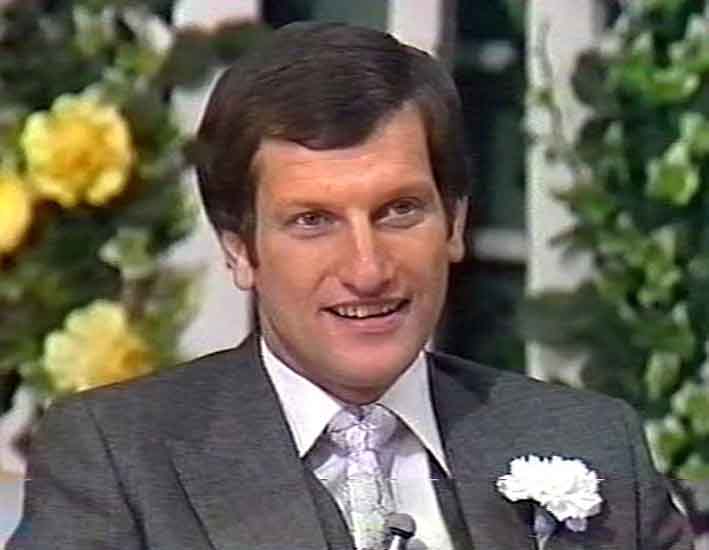 |
13 October 1981 Bob Champion - the jump jockey who triumphed over adversity to recover from cancer and win the 1981 Grand National - became the second This Is Your Life subject to be surprised on their wedding day. |
|
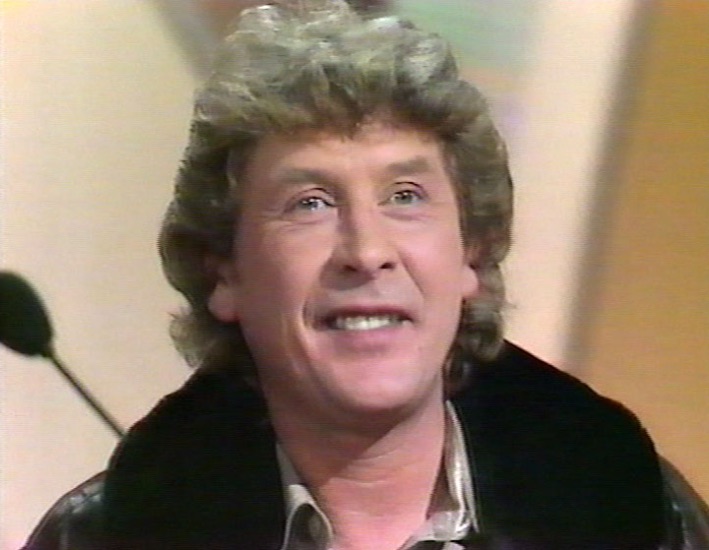 |
31 December 1981 The latest broadcast time for an edition of This Is Your Life - scheduled at 11pm on New Year's Eve - was a specially extended edition which featured record producer Mickie Most. |
|
 |
20 October 1982 At the end of series 22, Jack Crawshaw moved on to new projects after eight series of producing This Is Your Life. Malcolm Morris - who had steered the programme for three series in the early 1970s - returned as Producer and would stay until 1996, overseeing the show through some challenging times. |
|
 |
21 December 1983 The only known occasion that a subject - Matthew Kelly - has dropped the big red book while taking applause from the studio audience at the end of the programme! |
|
 |
19 December 1984 The first edition of This Is Your Life to be recorded in Hollywood pays tribute to the popular star of numerous 20th Century Fox movie musicals - Alice Faye. |
|
 |
May 1985 Two special hour-long editions were broadcast on consecutive weeks - featuring the actor Donald Sinden and the Second World War RAF flying ace Johnnie Johnson - whose edition coincided with the 40th anniversary of VE Day. |
|
 |
October 1986 Thames Television's Teddington Studios became the new base for This Is Your Life, as the majority of programmes over the next few years are recorded there. |
|
 |
24 December 1986 Future presenter Michael Aspel made his first appearance as a guest on This Is Your Life in an edition featuring Gary Wilmot - the two had worked together on Thames TV's magazine programme The Six O'Clock Show. Michael would take over as host of This Is Your Life in 1988 after Eamonn Andrews' untimely death in November 1987. |
|
 |
3 March 1987 The BBC review programme Did You See...? broadcast a special edition devoted to This Is Your Life, which included rare behind-the-scenes footage of the edition featuring Coronation Street actor Bill Waddington. |
|
 |
4 and 11 March 1987 This Is Your Life history was made when the actor, comedian, composer and musician Dudley Moore became the first subject to be honoured twice by Thames Television. The rare two-part edition was recorded in Hollywood and broadcast over two consecutive weeks. |
|
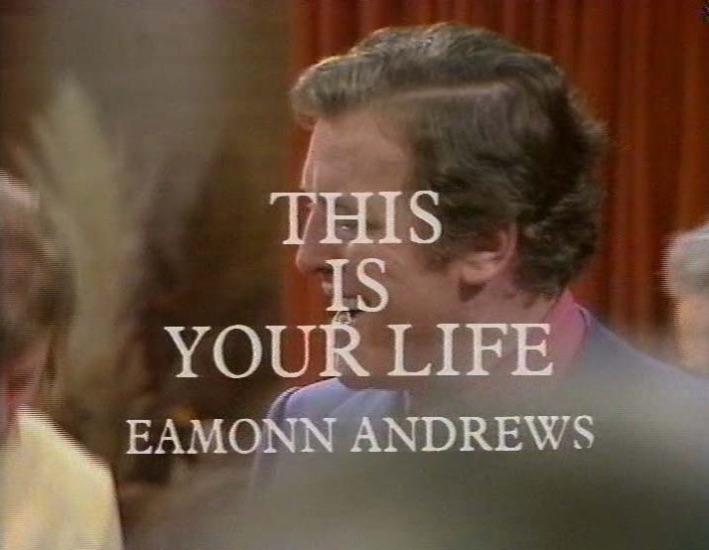 |
5 November 1987 News of the untimely death of Eamonn Andrews left the future of This Is Your Life uncertain. One of his last recorded editions - featuring comedian Jimmy Cricket - had been broadcast the previous evening. |
|
 |
January 1988 With the approval of the Andrews family, ITV broadcast the three editions of This Is Your Life which Eamonn had recorded before his death, including the final one he ever recorded - featuring Crossroads actress Jane Rossington. These were followed by the repeat showing of five editions from previous series, specially chosen by his family. |
|
 |
March 1988 Following months of press speculation about the programme's future, Thames Television revealed that This Is Your Life will return in the autumn of 1988 with new host Michael Aspel. |
|
 |
19 September 1988 Michael Aspel recorded his first This Is Your Life edition as the new presenter – surprising the musician and actor Phil Collins in London's Covent Garden. |
|
 |
19 October 1988 The 29th series of This Is Your Life is launched with new titles, a new variation of the theme music and a new presenter – Michael Aspel. The first subject to be featured is Hollywood and Broadway legend Mickey Rooney. |
|
 |
11 January 1989 The edition featuring agony aunt Claire Rayner included a This Is Your Life first, when presenter Michael Aspel, who had worked with Claire many times before, interviewed himself! |
|
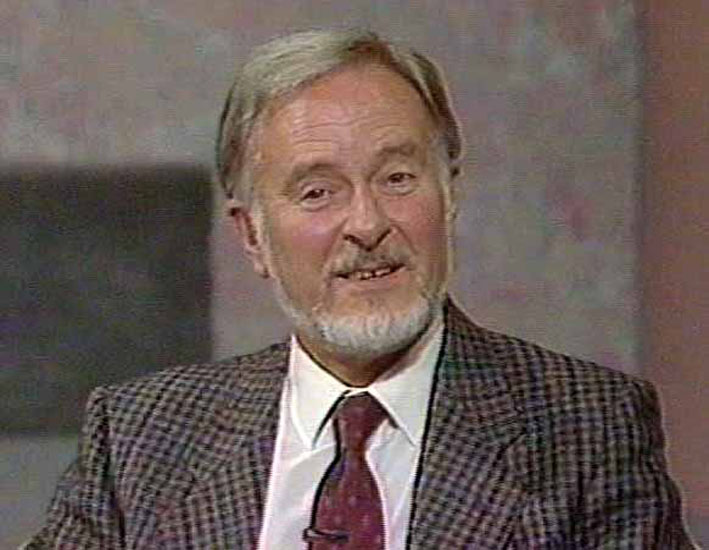 |
6 December 1989 In the first acknowledgement of a same-sex relationship, the production team added a post-credit apology to the programme featuring the actor Alec McCowen after failing to include any mention of his late partner Geoffrey Burridge. |
|
 |
7 May 1990 Comedian Ken Dodd was honoured in what was billed as the '500th life' produced by Thames Television and broadcast as an hour-long bank holiday special. The 500th subject was actually racing driver Nigel Mansell, featured in February 1989. |
|
 |
October 1990 Grainne, the widow of Eamonn Andrews, published the book For Ever and Ever, Eamonn - his unfinished memoirs, which she completed after his death. |
|
 |
7 May 1990 In what was billed as the '501st edition', series 31 opened with a gala evening which honoured the film producer Lord Brabourne and included an audience of former subjects from the last 21 years. |
|
 |
14 November 1990 In another first for This Is Your Life, the actor Richard Harris was greeted by his two ex-wives, who sat on either side of him! |
|
 |
26 August 1991 As part of a series of programmes marking the closure of its Lime Grove Studios, the BBC broadcast a half-hour compilation of early BBC editions of This Is Your Life – although none were ever broadcast from those studios! |
|
 |
7 April 1992 Manchester-born television producer and director T Leslie Jackson died. Leslie was the first producer of This Is Your Life and steered the programme through its first nine years from 1955 to 1964. |
|
 |
October 1993 The production team travelled to Australia for the first time to record two editions of the programme - honouring the Australian cricket captain Allan Border and British-born actor Michael Craig - which were then broadcast in June 1994. |
|
 |
July 1994 Roy Bottomley - who had been involved in every edition of This Is Your Life since 1969 - published The Story of Television's Famous Big Red Book, revealing many of the programme's behind-the-scenes secrets. |
|
 |
13 July 1994 Actor Richard Thorp - known to television viewers for his role in the ITV soap opera Emmerdale - suffered a heart attack at the after-show party of his This Is Your Life - but fortunately, he made a full recovery. |
|
 |
20 July 1994 The curtain came down on the ITV years when the channel screened the last-ever edition of This Is Your Life produced by Thames Television. The subject was the actress, singer and dancer Pat Kirkwood. |
|
 |
2 November 1994 This Is Your Life returned to its former home - the BBC - after an absence of three decades when series 35 began with a specially extended edition which honoured – for the second time – musical theatre composer Andrew Lloyd Webber. |
|
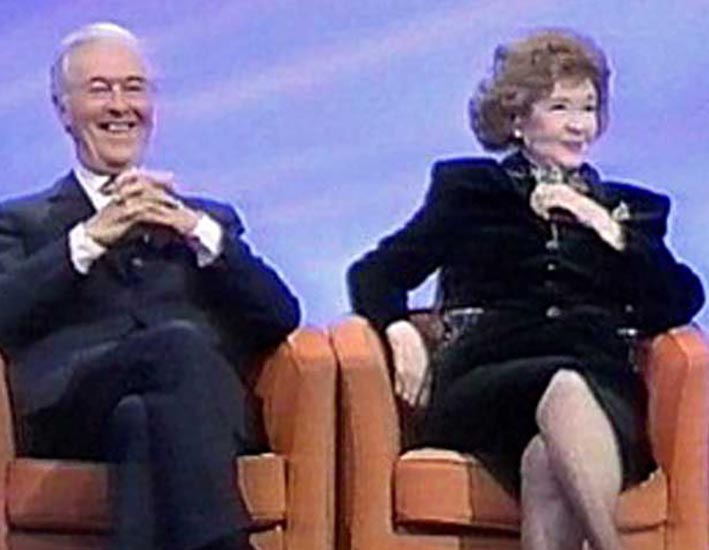 |
19 April 1995 This Is Your Life history was made when actors Michael Denison and Dulcie Gray became the only couple to be honoured with a joint tribute, having each previously received an individual big red book. |
|
 |
6 March 1996 More This Is Your Life history was made when the singer and actress Petula Clark became the first and only subject to be honoured three times, having previously been a subject in 1964 and 1975. |
|
 |
April 1996 The recently retired producer Malcolm Morris - who had steered This Is Your Life briefly during the early Thames Television years from 1971 to 1974 and later, and more significantly, between 1982 and 1996 - published his memoirs entitled This is My Life. |
|
 |
20 September 1996 A new production team was created for series 37 after the retirement of Malcolm Morris. John Graham - who held various positions over many years, including researcher, programme associate and associate producer - became the new Producer. Jack Crawshaw - who produced the show between 1974 and 1982 - returned as Editorial Consultant. |
|
 |
1 September 1997 More changes were made to the production team for the start of series 38 of This Is Your Life. Sue Green - a long-time researcher on the show, became the new Producer, and Jack Crawshaw became Series Producer. Together, Sue and Jack headed the programme through its final six years. |
|
 |
7 September 1998 The 1000th edition of This Is Your Life honoured Charles Stewart, a York-based village road sweeper, twice named Yorkshire and Humberside Street Cleaner of the Year. |
|
 |
1 October 1998 Producer and director Vere Lorrimer died. Vere directed many editions of This Is Your Life in the first eight series, then took over as the producer for the programme's ninth and final BBC series in 1963. |
|
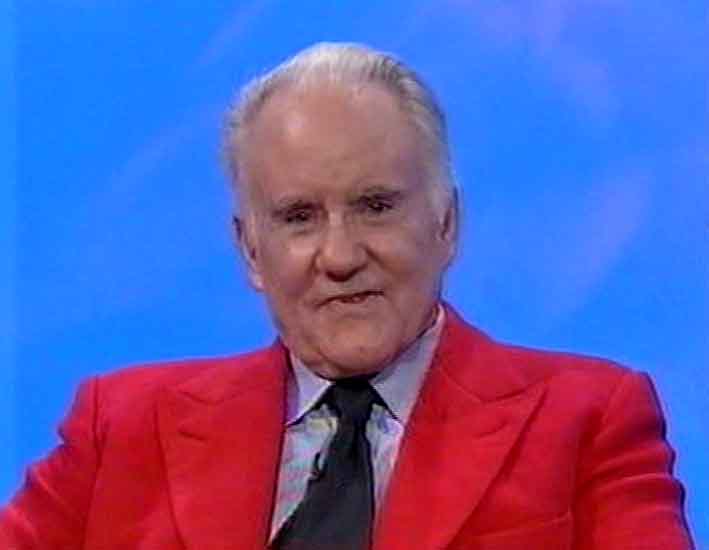 |
1 March 1999 The actor Ian Bannen became the 1000th subject of This Is Your Life and wore an appropriately coloured jacket for the occasion! |
|
 |
8 November 1999 The production team travelled further north than ever before in the history of This Is Your Life - to the gothic splendour of Lerwick Town Hall on the Shetland Islands to pay tribute to Britain's most decorated serving lifeboatman Hewitt Clark, coxswain of the Lerwick lifeboat. |
|
 |
13 November 1999 Series 40 of This Is Your Life included two extra editions - in addition to the usual weekly Monday editions - screened on a Saturday evening. The first featured actor and musician Martin Kemp, and the second, shown later in the series in March 2000, honoured the actor Tom Baker. |
|
 |
15 January 2000 The Night of 1000 Lives, presented by Michael Aspel, marked a thousand editions of This Is Your Life and included an audience comprised of former subjects, some classic clips and a few very special guests. |
|
 |
8 November 2001 Recorded on 11 September 2001 - the day now referred to as 9/11 - this edition, which featured songwriter, record producer and conservationist Tim Smit, almost didn't happen when the subject issued an ultimatum, forcing the production team to break with their historic protocol. |
|
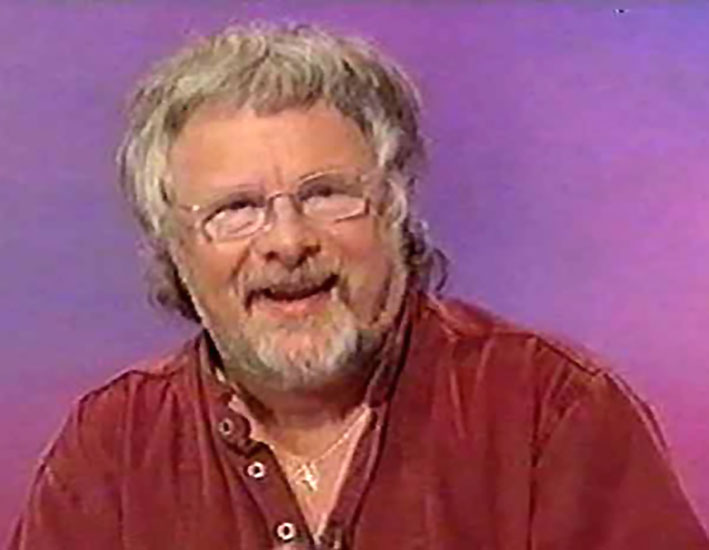 |
31 January 2002 Comedian, actor and presenter Bill Oddie gave Michael Aspel a definite refusal when he was surprised by the Big Red Book while filming at Slimbridge Wildfowl Trust. But his family told him they would kill him if he didn't appear, so he changed his mind, and the programme was recorded! |
|
 |
20 February 2002 The internationally renowned physicians and cancer specialists Ray and Trevor Powles became the only twins featured as a pair of subjects on This Is Your Life. Twins Babs and Teddie of The Beverley Sisters had been featured along with their sister Joy in December 1969. |
|
 |
28 September 2002 Former subject Barry Cryer presented a specially commissioned documentary for BBC Radio 4's Archive Hour, which celebrated the 50th anniversary of This Is Your Life - the programme began on American television in October 1952. |
|
 |
23 April 2003 The last ever extended edition was billed as a 'This Is Your Life Special', and such was the breadth of Bob Monkhouse's updated story that two big red books were needed, the second one delivered midway through the show by comedian Joe Pasquale. |
|
 |
2 June 2003 After 15 years and 393 editions, Michael Aspel recorded his last ever This Is Your Life and presented the Big Red Book for his final time - to music executive Simon Cowell before announcing his intention to quit the programme. |
|
 |
3 July 2003 The final outside broadcast of This Is Your Life, recorded earlier in the year at the National Mountaineering Exhibition at Rheged in Cumbria, honoured the mountaineer Chris Bonington, who lived nearby and who played a vital role in establishing the county's most extraordinary tourist attraction. |
|
 |
24 July 2003 Even after almost 50 years on screen, history was still being made - for the first time on This Is Your Life, THREE former wives are included on the guest list - in this case, they were all previously married to broadcaster Bob Harris. |
|
 |
8 August 2003 The final This Is Your Life was broadcast. Edition 1130 honoured the singer and television and radio presenter Aled Jones - subject 1104. Shortly after this broadcast, the BBC announced the end of This Is Your Life |
|
 |
16 November 2005 The man who created This Is Your Life - Ralph Edwards - died at the age of 92 in Los Angeles, California. |
|
 |
2 June 2007 This Is Your Life returned to ITV for a one-off edition presented by former subject Trevor McDonald to surprise music executive Simon Cowell - ironically, the subject previously surprised by Michael Aspel on the last edition he recorded. |
|
 |
28 November 2011 Writer and producer Roy Bottomley died. Roy was responsible for the revival of This Is Your Life in 1969, wrote hundreds of scripts for the show and acted as Programme Consultant with his writing partner Tom Brennand. |
|
 |
2 February 2016 Former producer Malcolm Morris died. Malcolm had steered This Is Your Life briefly during the early Thames Television years from 1971 to 1974 and later, and more significantly, between 1982 and 1996, overseeing the show through some of its most challenging times. |
|